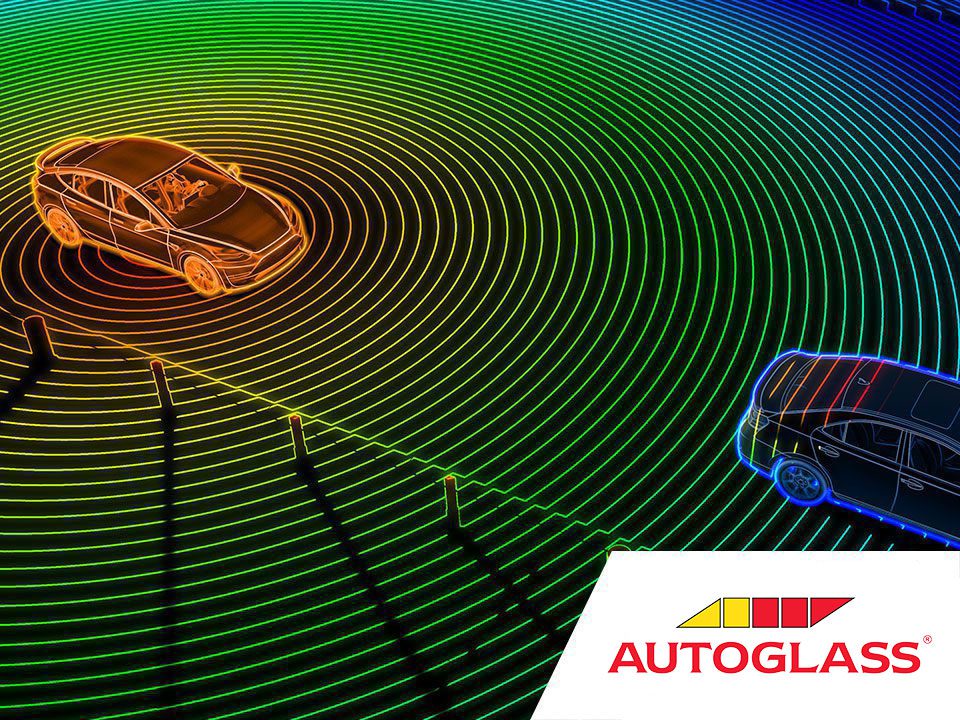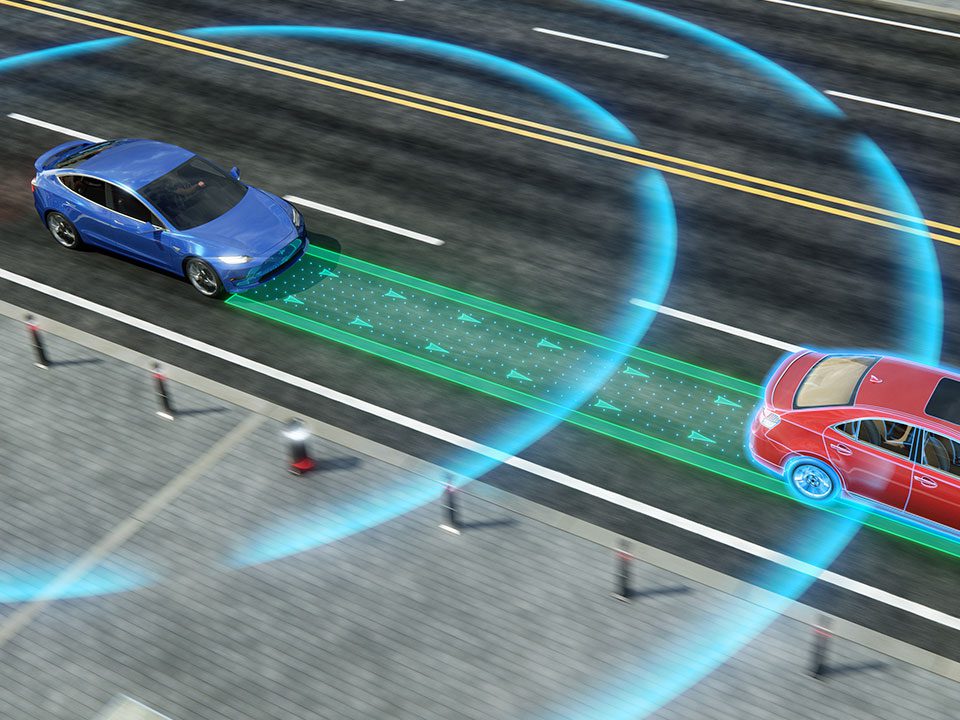
Less Common ADAS Features Explained
At Autoglass® we like to stay ahead of the curve and keep on top of all the latest developments in motoring technology. With each passing year, more advanced driver assistance systems arrive in the marketplace. With that in mind, we’ve given this month’s blog over to delving into some of the more uncommon ADAS features you may encounter when searching for a new car. So, before you head to your local dealership, why not take a look at this easy explainer covering some of the rarer ADAS technologies currently available on Irish roads?
Common ADAS Features Explained >>
Adaptive Light Control
As you might expect from the name, adaptive headlights are designed to adapt to a variety of different driving conditions as you encounter them. The crucial distinction between traditional static headlights and adaptive headlights is the fact that Adaptive headlights work in tandem with the steering wheel of your car.
As we all know that when you make a turn with your headlights on, due to the movement of the vehicle, the beams of your headlamps naturally end up focused on the opposite side of the road to where you are headed. Adaptive headlights get around this issue by communicating with various electronic sensors installed in your car. These sensors monitor the speed of the vehicle, the movements of the steering wheel as well as the side to side motion of the car. Taking all this information on board, the car automatically adjusts the angle of your headlights and ensures they are facing in the direction that is of the greatest assistance to the driver.
These sensors are then further connected to an electric motor inside both the headlight casings. A typical set of adaptive headlamps can turn 15 degrees from the centre, giving them a 30 degree set of motion.
The sensors in the adaptive headlamps prevent the lamps from turning when they are not supposed to. If the car is moving in reverse or moving very slowly, the adaptive headlamps won’t turn accordingly.
Crosswind Stabilisation
Crosswind stabilisation technology is an advanced driver assistance system that utilises specially designed sensors to detect when a car is being moved by strong gusts of wind. If the sensors detect your car being moved by the wind, the sensors then trigger the car’s emergency braking system, which in turn gently applies the brakes on the windy side of the car. This keeps the car on course without the driver ever having to react.
All you need to know about ADAS >>
Rear Cross Traffic Assist
Rear cross-traffic assist is an advanced driving assistance system that alerts the driver if the system detects a vehicle approaching their car from the side when they are in the process of reversing their vehicle. Usually, with systems like this, the alert icon will display on the appropriate side mirror to alert the driver to the oncoming vehicle.
Automatic Emergency Steering
Automatic emergency steering is a vehicle system that utilises sensors to detect when your car is on course to collide with an object in its path. Once the system has detected an oncoming hazard, it seizes control of your steering automatically with a view toward mitigating or entirely avoiding the collision, even if the driver fails to take any action.
Automatic Emergency Steering systems can use a wide variety of different sensor types (e.g. camera, radar, etc ), work in different driving conditions (e.g. motorways, city driving, etc ) and behave accordingly depending on the situation.
Traffic Jam Chauffeur
Traffic jam chauffeur is an extension of adaptive cruise control which is designed to autonomously accelerate and brake in low-speed traffic, all while remaining in-lane and maintaining a safe distance from the car in front. This means that you can take your feet off the pedals and let the car do all the heavy lifting.
Using a variety of sensors mounted around the exterior of the car. These activate when travelling at low speeds and scan the road around you for vehicles and other road users. The car can then take control by braking and accelerating to maintain a safe distance from the car in front – all without you needing to touch the pedals.
Unlike adaptive cruise control, traffic jam assist typically only works at low speeds – usually at up to 40 kph. Once you surpass this threshold, your car’s cruise control will once again kick in and you will have to retake control of the steering.
Highway Chauffeur
Vehicles equipped with highway chauffeur functionality are able autonomously to take control from the driver and travel in motorway conditions, adjusting speed to stay in line with developing traffic conditions and the rules of the road. Thanks to Highway Chauffeur, the vehicle stays safely in the lane and the driver does not have to take over again until they leave the motorway.
Highway Pilot
Much like the autopilot systems you might encounter in airplanes, highway pilot automates much of a car’s driving functions, such as lane keeping, speed control, and lane exiting and entering. Once the driver activates the system, highway pilot deftly matches the vehicle’s speed to road conditions. Thanks to your onboard computer – all this can be achieved while still observing the legal speed limit and maintaining the required distance from the vehicle behind and ahead of the vehicle in question.
Remote Parking
Remote parking is a new driver assistance system that enables the vehicle to automatically maneuver itself into and out of curb-side, perpendicular parking spaces.
Automotive Head-Up Display
An automotive head-up display is a catch-all term for any transparent display that presents data to the driver of a vehicle without needing them to take their eyes off the road.
At present, there are three different approaches to head-up displays in automobiles. The first is to apply a special treatment to the windshield so that an image projected onto it will reflect back to the person in the driver’s seat. The second utilises a small combiner that is separate entirely from the windshield itself and can be retracted. The third and final approach to installing an Automotive Heads-Up Display involves installing a purpose-designed laminate to serve as a transparent display in between layers of the windshield glass.
AR and HUD – Future Windscreen Trends >>
Electric Vehicle Warning Sounds
Electric vehicle warning sounds are sounds designed to alert pedestrians to the presence of an electric vehicle travelling at low speeds in their vicinity.
Warning sounds can be triggered by the driver (something akin to a traditional horn but less emphatic) or triggered automatically at low speeds. The sounds themselves can vary from the plainly artificial (like a beep or chime) to those that more explicitly mimic the engine sounds of traditional automobiles.
Sounds of this nature have been deemed necessary by some governments around the world as vehicles operating in all-electric mode produce considerably less noise than traditional combustion engine vehicles and can thus be dangerous for pedestrians who may not be paying attention.
Electronic Stability Control
Electronic stability control is a driver assistance technology that improves a vehicle’s stability by detecting and reducing loss of traction between the vehicle and the road. When electronic stability control detects loss of steering control, the system automatically applies the brakes to assist in steering the vehicle wherever the driver intended.
Crucially, thanks to this system, braking can be automatically applied to each wheel individually. That is to say, to the outer front wheel to counter oversteer, for example. Or, the inner rear wheel to react to understeer. Some Electronic stability control systems can also reduce engine power until the driver is understood to have regained control of the car.
Intersection Assistant
Intersection assistant refers to a technology designed to reduce the amount of dangerous collisions at junctions. The system monitors cross traffic encountered at a road junction and if this system detects a hazardous situation, initially it prompts the driver to start emergency braking before automatically engaging the vehicle’s brakes autonomously.
Glare-Free High Beam
Glare-free high beams are a camera-driven dynamic lighting control system that, in essence, selectively shades portions of a vehicle’s high beam pattern to protect road users travelling the opposite direction from the glare of your headlights.
This constantly changing beam pattern requires complex sensors and microprocessors as the vehicles being saved from exposure to full beam of your headlights are constantly moving. This effect can be achieved through the application of movable shadow masks within the light path inside the headlamp or by selectively darkening LED emitters in your lights.
Dynamic vs Static ADAS – what’s the difference? >>
Intelligent Speed Adaptation
Intelligent speed adaptation is an umbrella term for any system that ensures that a vehicle’s speed never exceeds a safe or legally enforced limit. In case of potential speeding, the driver can be alerted, or the speed reduced automatically.
Many intelligent speed adaptation systems also provide information about driving hazards (e.g. pedestrians, railway crossings, schools, etc.) and the limits enforced by speed cameras.
Lane Centering
Lane centering is an advanced driver-assistance system that keeps your car safely in the centre of the lane it is travelling , essentially freeing the driver from the task of steering. Lane centering is similar to lane departure warning, but rather than warn the driver, or bouncing the car away from the lane edge, it keeps the car firmly in the centre of the lane.
Vehicular Communication Systems
Vehicular communication systems are computer networks in which vehicles and roadside units serve as their own communicating nodes, providing each other with information, such as safety warnings and traffic information. Technologies like this can prove invaluable for avoiding delays caused by accidents and heavy traffic.
Vibrating Seat Warnings
This advanced driver assistance system utilises the same technology that causes your phone to vibrate. The vibrating motors are embedded in the driver’s seat of the vehicle.
When another vehicle moves behind or beside the car, sensors send a message to the seat that increases the vibrating and pushing on that side of the driver’s back. So, for example, if another car pulls alongside the rear-right side of the Vibrating seat warning equipped vehicle, the lower-right of the driver’s back will vibrate – alerting the driver to the presence of the other vehicle.
What is ADAS Windscreen Calibration? >>
Wrong-Way Driving Warning
Wrong-way driving warning is a new advanced driver-assistance system devised with a view toward preventing motorists from driving the wrong-way.
In the event of wrong-way driving, a visual and audio warning is emitted to the driver, prompting them to adjust their trajectory and get the car travelling the right direction once again.
We hope you found this explainer illuminating and you’re feeling confident in deciding which of these uncommon ADAS features may be appealing to you. Don’t forget, to check back with the Autoglass® blog soon for more explainers just like this one. Safe travels.
Book an appointment now
For a quick and easy way to make an appointment book online now.

